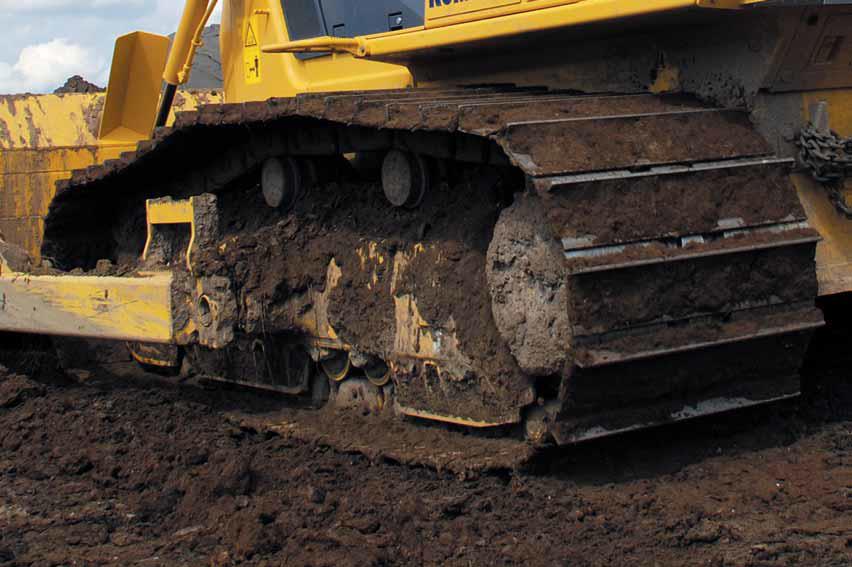
How can I prevent damage to my machine’s undercarriage?
The undercarriage typically represents 50% of a machine’s total owning & operating costs so being aware of the contributing factors that can lead to undercarriage component damage may help keep productivity high and keep the total cost of ownership down.
- Lack of cleaning
A build up of dirt and debris, especially when cold, can cause damage to undercarriage parts. Soil, clay, and sand can be abrasive and cause grinding between the components and can cause an increase in track tension when solid. Rubber Tracks can even stretch or break if debris is allowed to build up.
If possible, use a shovel to clean out the undercarriage throughout the day and if possible, use a pressure washer to clean out the harder to reach places. A regular cleaning procedure will also avoid debris freezing overnight, making it even more difficult to clear in the morning.
- Avoiding proper operation
Improper or rushed operation of heavy machinery can increase damage potential on the undercarriage. Limiting the following actions can decrease undercarriage wear:
Speeds – High speeds are a root cause of undercarriage damage – steel undercarriage s are not built for speed. Operators should take care to limit their speed to preserve bushings, pins and sprockets particularly.
Turns – Pivot turns can be harmful to rubber tracks as sharp turns increase wear, and can even lead to de-tracking. While adding a few seconds to work time, making wider turns in your mini-midi excavator will reduce the likelihood of damage.
Reversing – Limit reversing, especially at speed, as this can wear out sprockets, pins and bushings on your undercarriage.
Slopes – Flat terrain is always preferred when driving heavy machinery, however, while its impossible to avoid slopes completely, try to limit time spent on them. Where slopes are unavoidable, work up & down the slope rather than side-to-side.
- Incorrect track tension
If a track tension is too taut, the idlers and rollers will wear quicker. If the track is too loose, the track can be thrown especially when operating on uneven ground. Monitoring and adjusting the track via the tensioner should be done periodically throughout shifts.
- Ignoring inspection red flags
A lack of a regular scheduled inspection can lead to increased risks of damage to undercarriage parts. Even if inspections are maintained, failing to act on visible signs of breakage, cracking, wear or missing components will lead to an uneven work quality, reduce productivity and more costlier repairs down the line. Replace components as quickly as possible.
Our PSSRs are on hand to conduct undercarriage inspections and can be contacted here – Product Support Team and Specialists
Click here for more information on Undercarriage options and components
